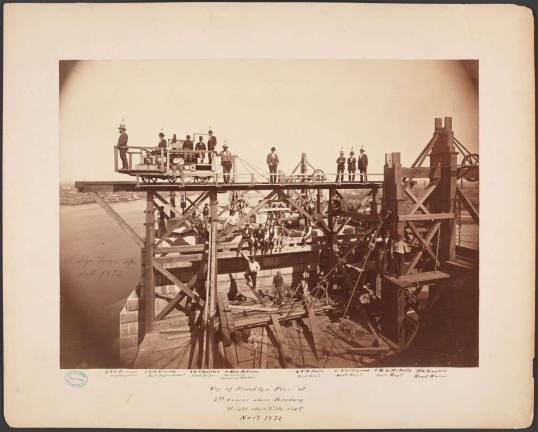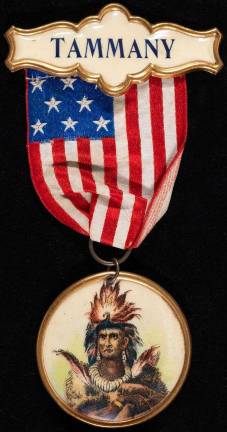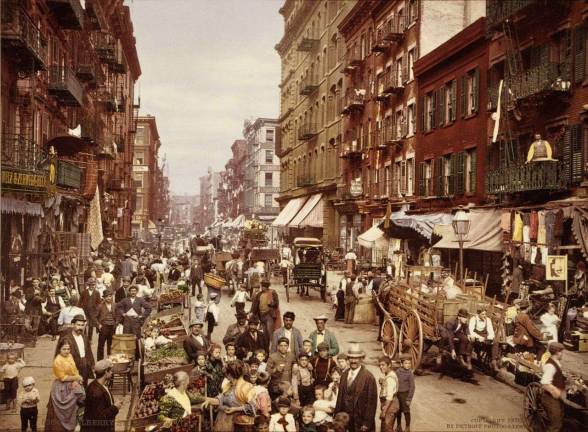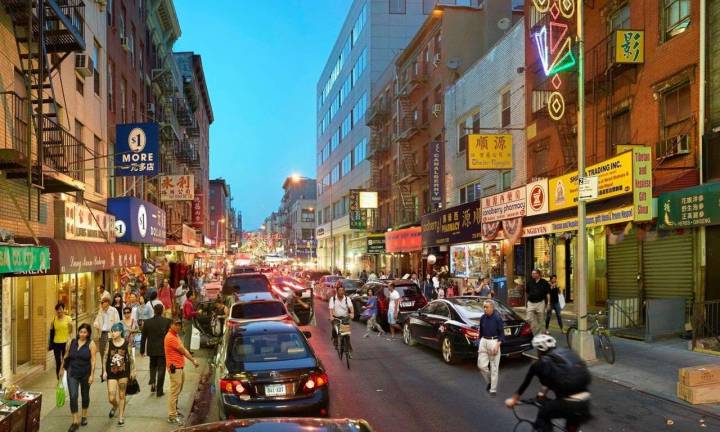hard core





BY VAL CASTRONOVO
City Councilman Dan Garodnick called it “the Holy Grail for understanding the rich history of New York City.” The new permanent installation at the Museum of the City of New York has been five years in the making, part of a 10-year, $100 million-renovation of this cultural institution. Three first-floor interactive galleries parade 450 objects and images with a focus on four themes: money, diversity, density and creativity.
As Whitney Donhauser, the museum's director, said at a preview, the exhibition illustrates “the challenges and reinvention of New York” across hundreds of years and highlights “iconic New Yorkers who shaped the city. We virtually meet these New Yorkers and hear their stories” — a reference to the high-tech touch screen displays sprinkled throughout the galleries. “The exhibit fulfills the mission in our name. It tells how New York became New York.”
The first gallery, “Port City,” begins with Henry Hudson's arrival in New York Harbor in 1609 and chronicles almost 300 years of city history, culminating in the unification of the five boroughs into Greater New York in 1898. Touch one of the interactive screens in the middle of the room and meet Peter Stuyvesant or Walt Whitman or Emma Goldman — or the inhabitants of centuries-old oyster beds. The stories of business tycoons mingle with the stories of ordinary New Yorkers, like slum dweller Susie Rocco on the Lower East Side, the 12-year-old face of overcrowding identified by muckraker Jacob Riis. Swipe up to learn some of the creative ways city leaders met the challenge of density: new buildings were required to include indoor toilets and a window in each room. An interactive map pinpoints public health threats in Susie's packed neighborhood, locating disease centers, liquor stores and “Stables, Privies, or 'Extremely Offensive Privies.'”
As Chief Curator Sarah Henry says, “an exhibit is an experience.” This exhibit represents visual storytelling at its finest, presenting artifacts alongside state-of-the-art technology. “It's accessible to those who know nothing about New York, but full of details that veterans don't know,” she told us. “Data is accessible through maps and infographics, but in dialogue with individual people.”
The second gallery, “World City,” opens with the 20th century's modern metropolis and closes with the 21st century's ravaged city after Hurricane Sandy in 2012, telegraphing the issue of climate change. Films and photos are projected onto long screens at the center of the room with labels such as “Street Life” and “Making a Living.” Because this is a show about the Big Apple, there's an early 20th century apple peeler and corer, courtesy Russ & Daughters, the appetizing shop. Immigrant Joel Russ liked apples in his herring salad, a refreshing thought. With the Second Avenue subway on the horizon, visitors can peel back the layers of the history of mass transit and dwell on another creative solution to the problem of density in lower Manhattan: an expansion of the subway system.
Multiple, publicly operated lines were added to the original, privately operated IRT system in the 1920s, enabling migration to the outer boroughs and the easing of overcrowding downtown. Come here to see the first subway ticket (5-cent fare in 1904) and the Tiffany-designed silver and wood shovel (1900) used at the groundbreaking ceremony for the first subway. Hamilton fans will be happy to know that the handle shaft came from a tree planted by the Founding Father in 1803.
The display cases are riddled with artifacts that tell the story of the city through the lens of the four themes. Take money: From its perch as “Capital of Finance” at the dawn of the 20th century to the financial “Meltdown” in 2007-08, when recession hit, New York has proven its resiliency. “The Occupied Wall Street Journal” (November 2011), on view here, stands testament to the Occupy Wall Street movement, which began in September 2011 in response to the financial crisis and economic inequality. Note the 2008 photograph of a former Lehman Brothers employee signing a painting of CEO Richard Fuld, placed outside Lehman on the day it declared bankruptcy. Artist Geoffrey Raymond invited passers-by to scribble comments on the portrait, “The Annotated Fuld.”
In between, there is a wealth of cultural markers, from Bill “Bojangles” Robinson's tap shoes to a Studio 54 guest list that includes Liberace, Ringo Starr, Lindsay Wagner and others. The disco song “Everybody Dance” is fittingly part of the music loop and brings you back, if you are of a certain age. Henry, the chief curator, noted with pride the exhibit's display of designer Milton Glaser's original sketch for the “I (Heart) New York” logo (1976). “It was done in the back of a cab,” she said, on an envelope.
The “Future City Lab,” the last gallery, focuses on forward thinking. Through a host of interactive activities, it encourages exploration of public policy issues such as affordable housing, transportation and green infrastructure. A city simulation game allows you to design a building or a park and then insert yourself into the design — and share on social media.
Let the comments begin.